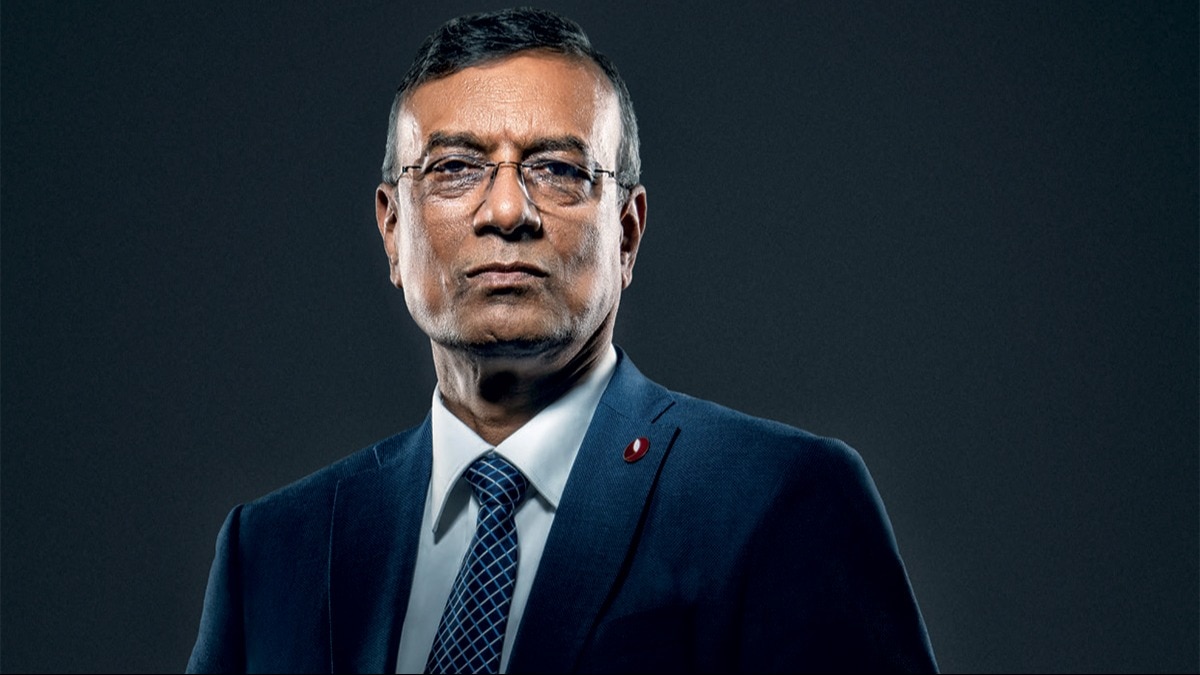Chandra Shekhar Ghosh: Transforming Lives, One Loan At A Time

Few individuals embody resilience and purpose as profoundly as Chandra Shekhar Ghosh. Born in the humble village of Ramchandrapur, Tripura, Ghosh’s early life was defined by hardship and limited opportunity. His father’s modest sweet shop provided a meager livelihood, forcing young Ghosh to supplement the family income by selling milk on his bicycle. While many might have succumbed to despair, Ghosh chose a path of perseverance and education that would eventually lead him to build Bandhan Bank—a financial institution valued at over ₹30,800 crore.
Chandra Shekhar Ghosh- A Journey of Determination and Learning
From the start, Chandra Shekhar Ghosh was guided by an unshakable belief in the power of education. With his meager savings, he pursued a degree in Statistics at Dhaka University, graduating in 1978. Just as his future seemed promising, tragedy struck: his father passed away, leaving Ghosh, the eldest of six siblings, to shoulder the family’s financial burdens. Undeterred, he took on the role of the family’s primary breadwinner.
In 1985, Chandra Shekhar Ghosh’s persistence bore fruit when he joined BRAC, a renowned development organization in Bangladesh, as a field officer. This role immersed him in the realities of rural poverty, exposing him to the struggles of those left behind by traditional financial systems. It was during these village visits that Ghosh encountered an incident that would forever shape his vision. In the impoverished village of Rangpur, he met families who hadn’t eaten in days. Ghosh’s modest act of giving them ₹50 planted the seed of a larger mission: to create a sustainable solution that empowered the underprivileged, particularly women, through financial inclusion.

The Birth of Bandhan
This pivotal experience, coupled with his keen understanding of microfinance, inspired Chandra Shekhar Ghosh to launch his own initiative. In July 2001, with an initial investment of ₹2 lakh, Bandhan was established. Operating out of a small office in Konnagar, a suburb of Kolkata, Bandhan began offering microloans as small as ₹1,000 to marginalized women. These loans weren’t just financial transactions; they represented a lifeline for women who, for the first time, had access to credit and the chance to improve their livelihoods.
However, Bandhan’s early days were far from smooth. Funds were scarce until 2002, when the Small Industries Development Bank of India (SIDBI) extended a crucial ₹20 lakh loan. This allowed Bandhan to take its first real steps, and within a year, it had disbursed ₹15 lakh to 1,120 women. As demand grew, Ghosh opened a second office in Bagnan, Kolkata, and steadily built an organization that transformed lives.
The Evolution into a Financial Powerhouse
By 2006, Bandhan had taken a monumental leap forward. Chandra Shekhar Ghosh acquired a non-banking financial company (NBFC), enabling Bandhan to scale operations as “Bandhan Financial Services.” The impact was swift and profound. By 2010, Bandhan had extended its reach to over 50 lakh women, cementing its reputation as India’s largest microfinance institution. What set Bandhan apart was its commitment to fairness; it charged an annual interest rate of just 20.5%, significantly lower than most microfinance entities at the time.

The recognition of Bandhan’s success came not just from its borrowers, but also from prestigious global organizations. In 2010, the World Bank’s International Finance Corporation (IFC) and other international lenders injected ₹135 crore into Bandhan. This infusion of capital helped the organization disburse loans totaling ₹10,000 crore.
Becoming a Bank: A Landmark Achievement
As Bandhan flourished, Chandra Shekhar Ghosh set his sights on an even more ambitious goal: transforming Bandhan into a full-fledged bank. When the Reserve Bank of India invited applications for new banking licenses in 2013, Ghosh’s vision took center stage. In 2015, Bandhan achieved what many deemed impossible. It became the first microfinance institution in India to secure a universal banking license.
On August 23, 2015, Bandhan Bank was formally inaugurated, a moment that marked the culmination of Ghosh’s two-decade journey. Starting with 501 branches, 2,022 doorstep service centers, and 50 ATMs, the bank brought financial services directly to underserved communities. The emphasis remained on serving self-help groups, small businesses, and marginalized individuals who had long been excluded from the traditional banking ecosystem.
A Stellar Market Debut and Continued Growth
The public markets validated Chandra Shekhar Ghosh’s vision in March 2018 when Bandhan Bank launched an initial public offering (IPO) that raised ₹4,473 crore. The IPO was a resounding success, oversubscribed 14.6 times. Today, Bandhan Bank boasts 3.35 crore customers, operates 6,297 branches across 35 states and union territories, and has processed deposits worth ₹1.35 lakh crore. Its market capitalization of ₹30,800 crore is a testament to the trust and value it has created.
A Legacy of Impact
Chandra Shekhar Ghosh’s story is one of relentless determination and compassion. He did not come from a background steeped in finance or banking. Instead, he relied on his deep empathy and an unwavering commitment to improving the lives of others. Through Bandhan Bank, Ghosh has touched the lives of millions, providing them with the tools to rise out of poverty and achieve financial independence.

His journey—from selling milk on a bicycle to leading a multi-crore banking institution—underscores the transformative power of vision, hard work, and a dedication to social impact. Chandra Shekhar Ghosh has proven that business success and societal betterment are not mutually exclusive. Instead, they can go hand in hand, creating a legacy that inspires generations to come.




